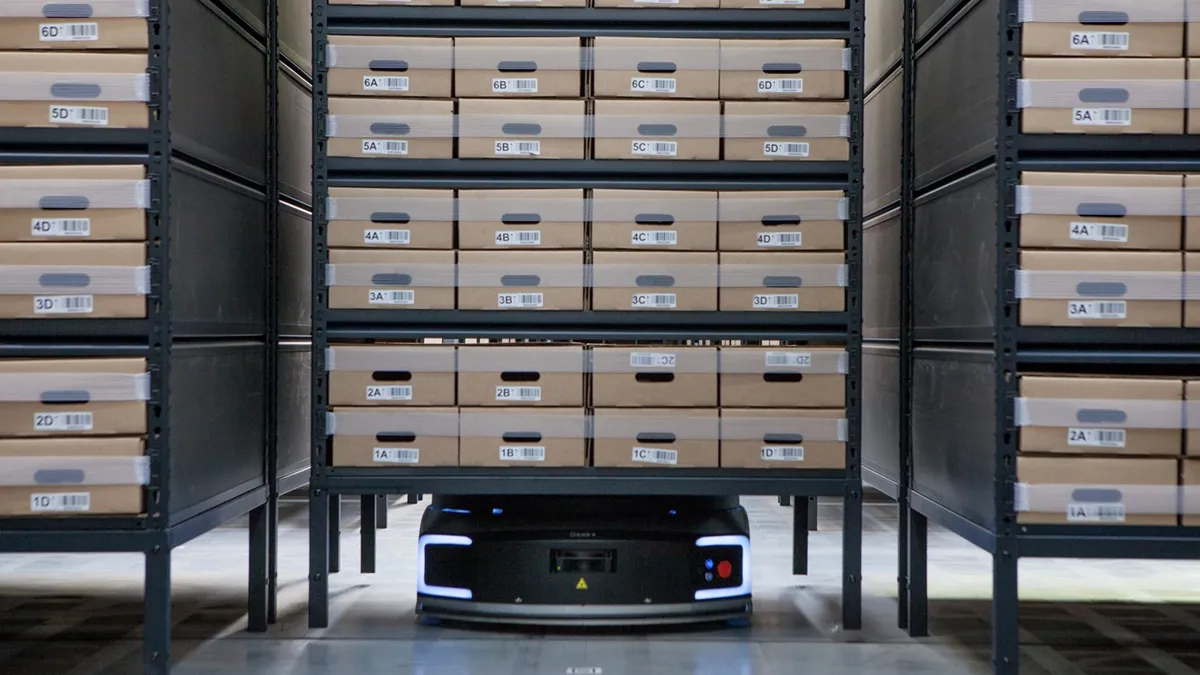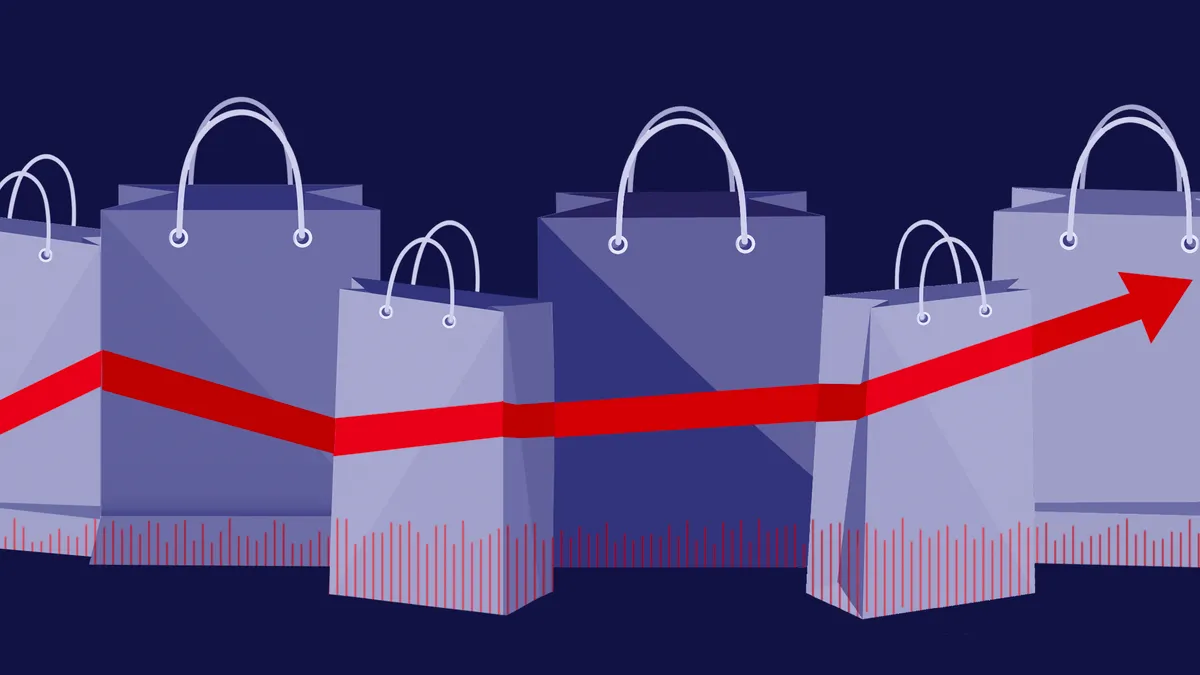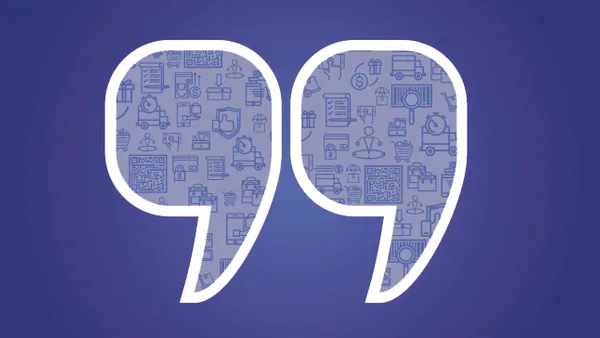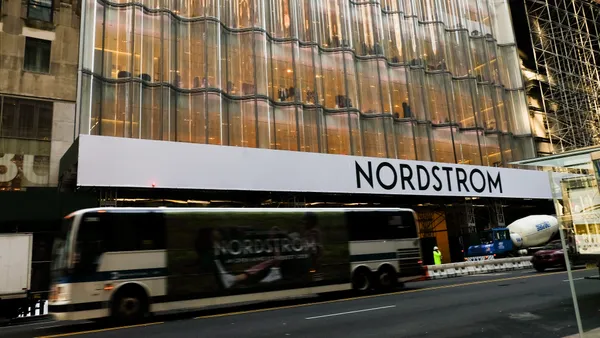What happens after a customer returns an item? The reverse logistics process starts. Reverse logistics is a type of supply chain management that moves goods from customers back to sellers or manufacturers.
Many companies don't have the right systems in place to handle a large volume of returns. The National Retail Federation estimated that around $218B of online purchases were returned last year, which created a significant cost challenge for retailers.
In order to optimize reverse logistics processing and reduce the cost impact of returns, having an automated returns solution in place can help retailers to efficiently manage peak return season.
Current situation and pain points of returns scenario
Status quo: Shoes and apparel products have strong seasonality, short sales cycles, and many SKUs each season. There are a large number of returned products in daily sales, after big promotions, and seasonal changes. When the return rate is high, it can reach 30%-50%. Also, there are many types of returned SKUs, and the number of returned goods varies. Different SKUs are mixed in the same packaging box, and the quality varies greatly.
Pain points: Businesses hope that the returned products in season can be quickly sorted and put on the shelves for secondary sales; the returned products from past seasons can be quickly sorted and stored, and then sold in batches for promotions. This is difficult to achieve with manual operations and cause other problems.
The traditional manual processing of returns takes time, is inefficient, and typically has many processing errors. It usually ranges from 1-2 weeks to 1-2 months, which can seriously affect the secondary sales of returns.
The slow turnover of returns causes costly storage of goods, occupying precious warehouse operation space for long periods. In order to deal with slow returns processing, a larger warehouse and more costs will be required.

Traditional manual warehouse return solutions and shortcomings
Process:
(1) Manually count and receive the returned goods.
(2) Unpack the boxes one by one, and conduct quality inspection one by one.
(3) Manually classify the goods one by one according to the quality level and place them separately according to the quality level.
(4) Manually distribute all A-level products according to the aisle.
(5) Manually scan the SKUs in the aisle to check the storage location and put them on the shelf.
(6) Manually find the storage location in the aisle and consolidate the goods off the shelf as needed.
Drawbacks:
(1) From inbounding to putaway, the overall process of returns has many steps. The returns processing cycle is long, and it is difficult to re-sell the returned goods, which affects sales. Once the product is returned, it becomes a backlog. If the product cannot be sold again, it lost its value and business revenue is hindered.
(2) A special sorting site is required, and the site occupies a large area. The height utilization of the sorting area is only about 0.7-1.3 meters, and the vertical space is wasted.
(3) Relying on a large amount of labor, the production capacity is not flexible. It is difficult to recruit personnel and expand the space during peak returns season.
(4) The capacity bottleneck of traditional solutions is obvious. The efficiency of manually distributing the goods and putting them on the shelves is very low, and the error rate is high.
(5) The untimely processing of returns occupies a large amount of warehouse operation space and storage space, which, as a result, affects the normal operation of the warehouse.
(6) The consolidation and removal of the returned products in the warehouse requires manual processing. The labor demand is large and the efficiency is very low.
Geek+ Returns solution
Process:
(1) Manually count and receive the returned goods.
(2) Unpack the boxes one by one, and carry out quality inspection one by one.
(3) Manually classify the goods one by one according to the quality level and place them separately according to the quality level.
(4) Directly putaway using Goods-to-Person robots for random shelf storage.
(5) Accept the order, picking and outbounding by Goods-to-Person robots.
(6) Carry out consolidation and take off the shelf as needed by Goods-to-Person robots.
Advantages:
(1) The process steps are shortened, and there is no need to divide the goods according to the aisle before putaway. After the product quality inspection and classification, the goods can be directly putaway by Goods-to-Person robots automatically, and the returned goods can be quickly turned into saleable inventory. Geek+’s Goods-to-Person solution improves the sales opportunities of goods in the current season and can increase sales by about 5%-15%.
(2) The bottleneck in the process is solved. There is no need to manually scan the aisles one by one to find the storage location and put the goods on the shelf. The process efficiency is greatly improved and can be increased by as much as 2x.
(3) The intelligent consolidation strategy of Geek+'s Goods-to-Person solution has high efficiency and yields the rapid removal of the backlog of returned products. Consolidation logic design can be intelligently carried out as needed to increase the volume of a single consolidation and reduce the frequency of consolidation.
Values:
-
Grasp the core pain points of customers, solve the secondary sales of seasonally returned products, and the rapid processing needs of seasonally returned products.
-
Simplify the return processing process, improve the efficiency of the whole process, reduce the dependence on manual labor, and make the production capacity more flexible.
-
Through the accumulation of daily returns, multiple sorting and consolidation are reduced, and the efficiency and timeliness of tally are improved.
-
Increase the turnover rate of goods and reduce the storage and storage costs of returned goods.
Compared with traditional solutions, what drawbacks are solved
-
Overall process refactoring → solve the problem of long process and low efficiency, and solve the core pain points of customers.
-
Remove the sorting process → solve the problem of excessive space occupation and low production capacity.
-
Remove the manual sorting of goods and put them on the shelves in the aisles → solve the problem of too much dependence on manual labor and inflexible production capacity.
-
Intelligent consolidation strategy → solve the problem of high consolidation frequency, heavy workload and low efficiency in traditional solutions.










